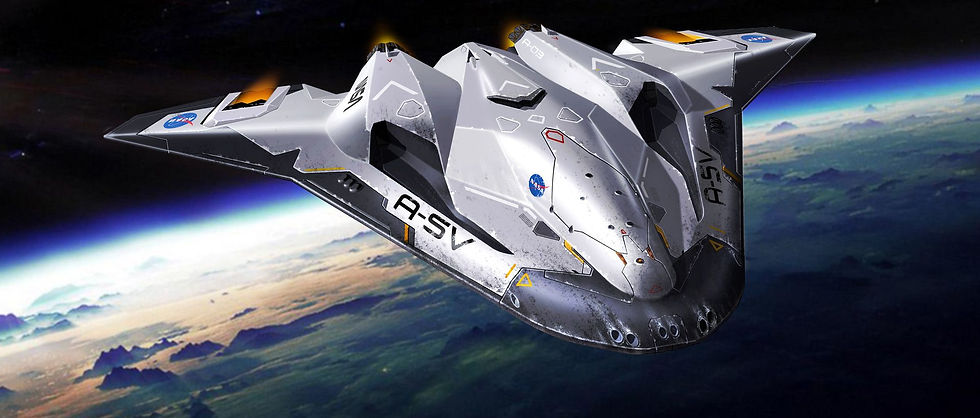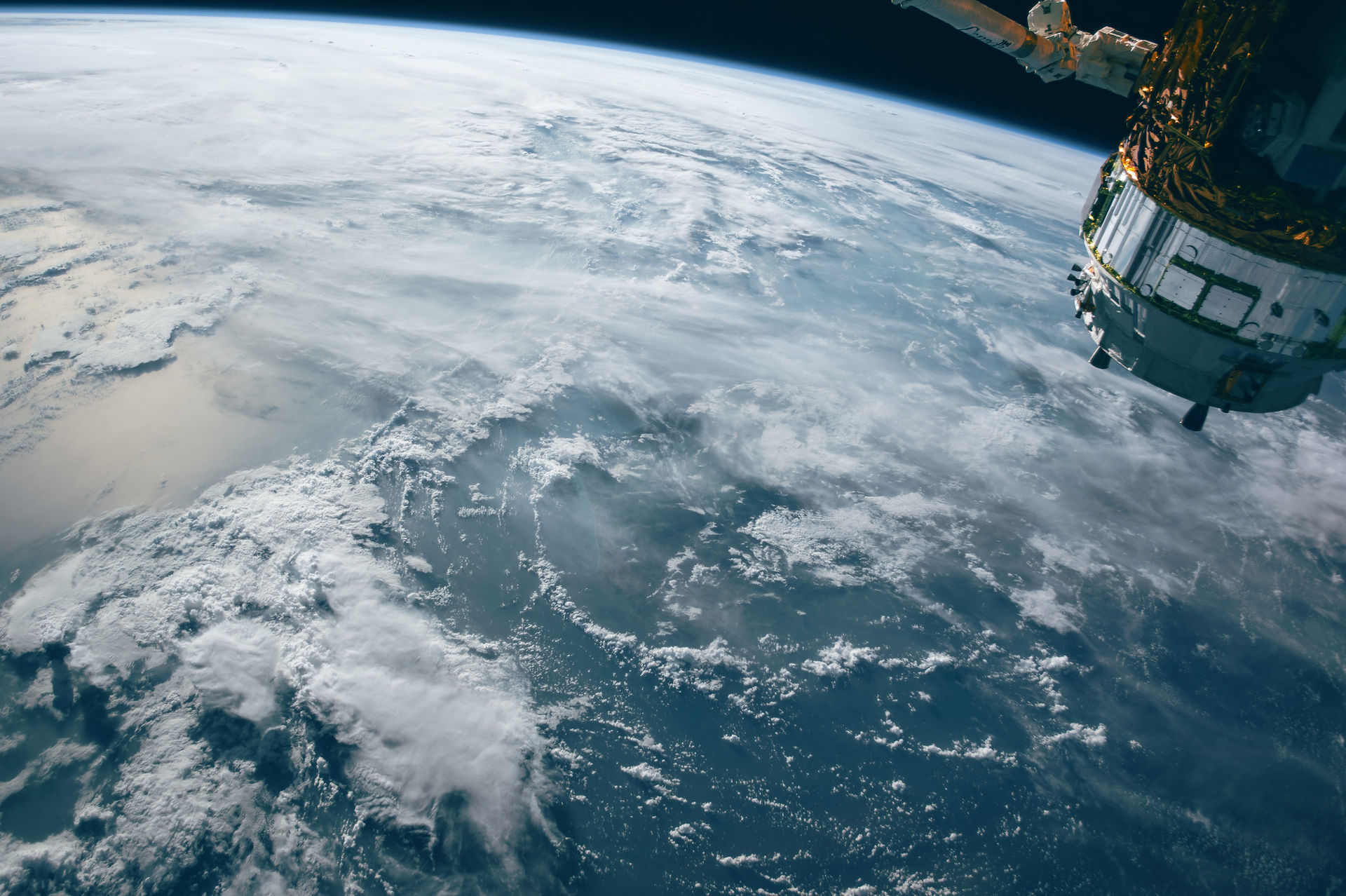





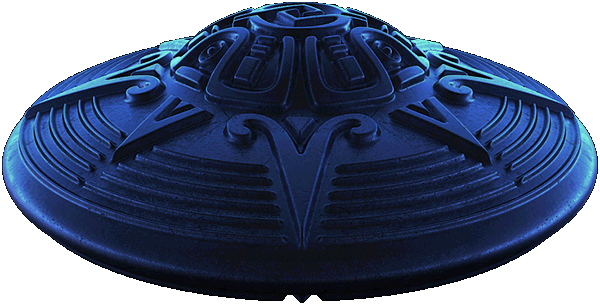


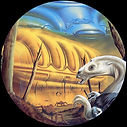

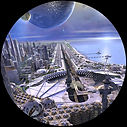

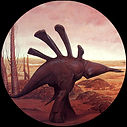


- The Future -
NASA’s future will continue to be a story of human exploration, technology, and science. We will go back to the Moon to learn more about what it will take to support human exploration to Mars and beyond. We will continue to nurture the development of a vibrant low-Earth orbit economy that builds on the work done to date by the International Space Station. NASA engineers will develop new technologies to improve air transport at home and meet the challenges of advanced space exploration. Our scientists will work to increase an understanding of our planet and our place in the universe. We will continue to try to answer the question, “Are we alone?”
Unlike the way the space program started, NASA will not be racing a competitor. Rather, we will build upon the community of industrial, international, and academic partnerships forged for the space station. Commercial companies will play an increasing role in the space industry: launching rockets and satellites, transporting cargo and crew, building infrastructure in low-Earth orbit. NASA will continue to be a global leader in scientific discovery, fostering opportunities to turn new knowledge into things that improve life here on Earth.
Moon 2024
In the half-century since people visited the Moon, NASA has continued to push the boundaries of knowledge to deliver on the promise of American ingenuity and leadership in space. And NASA will continue that work by moving forward to the Moon with astronauts landing on the lunar South Pole by 2024.
NASA is implementing the President’s Space Policy Directive-1 to “lead an innovative and sustainable program of exploration with commercial and international partners to enable human expansion across the solar system.” NASA stands on the verge of commercializing low-Earth orbit. These experiences and partnerships will enable NASA to go back to the Moon in 2024 – this time to stay. NASA’s backbone for deep space exploration is the biggest rocket ever built, the Space Launch System (SLS), the Orion spacecraft and the Gateway lunar command module. With its partners, NASA will use the Gateway lunar command module orbiting the Moon as a staging point for missions that allow astronauts to explore more parts of the lunar surface than ever before
Aeronautics
NASA’s work in aeronautics has made decades of contributions to aviation, national security and our economy. Ongoing research and testing of new aeronautics technologies are critical in these areas and will help the U.S. lead the world in a global aviation economy, with increasing benefits worldwide. Developing quiet supersonic transport over land, and quieter, cleaner aircraft technologies are two ways NASA is transforming aviation.
Earth
Space exploration likely comes to mind when you think of NASA, but NASA’s work has many benefits that are closer to home for Earth and its citizens. Earth science research will continue, with new technologies that will help us understand Earth as a system and its responses to natural or human-induced changes. Scientists utilize satellites, airborne missions, and ground-based observations to gather data about the ongoing natural and man-made changes to Earth’s land, water, and air to help improve the quality of life around the world.
Technology
When NASA was created 60 years ago, it had to invent the technology to get where we needed to go, and we will continue to push the boundaries of technology into the future. New emerging technologies that open opportunities for research and exploration with minimal investments include NASA’s small satellites. Exploring deep space and three-year missions to Mars pose new challenges: Can you take enough? Can you grow it or make it in space? Can you do your own repairs and maintenance? As before, NASA will adapt solutions to these and other challenges into technologies that will improve life at home.
Human Spaceflight
Nearly a half-century ago, Apollo 11 astronaut Neil Armstrong walked on the Moon. NASA is now preparing for an ambitious new era of sustainable human spaceflight and discovery. The agency is building the Space Launch System rocket and the Orion spacecraft for human deep space exploration. With the help of commercial and international partners, NASA will develop new opportunities in lunar orbit, including a platform to aid surface exploration and serve as a gateway to Mars. The International Space Station will continue to serve as the world’s leading laboratory where researchers can conduct cutting-edge research and technology development to enable human and robotic exploration of the Moon and Mars. The space station will also facilitate the growth of additional privately owned spaceships for continued research and transportation in low-Earth orbit.
Solar System
NASA will be returning to places previously explored with ambitious new missions and new technologies. Much remains to be learned about the Moon and how we might use its soils and other resources to support human habitation elsewhere. The complex journey to Mars is challenging NASA and its partners to figure out how to get there, land there, live there and get home. NASA will also be searching for clues of life throughout our solar system.




Dream Chaser
Sierra Nevada Corporation’s Dream Chaser cargo spacecraft will join NASA’s commercial cargo providers Orbital ATK and SpaceX to deliver research and supplies to the International Space Station. The Dream Chaser also will be able to bring research back to Earth, and Sierra Nevada Corporation also is developing a crew version of the spacecraft for commercial use.
Space Launch System
NASA’s Space Launch System, or SLS, is a powerful, advanced launch vehicle. With its unprecedented power and capabilities, SLS will launch crews of up to four astronauts in the agency’s Orion spacecraft on missions to explore multiple, deep-space destinations. Offering more payload mass, volume capability and energy to speed missions through space than any current launch vehicle, SLS is designed to be flexible and evolvable and will open new possibilities for payloads, including robotic scientific missions to places like Mars, Saturn and Jupiter.
X-57
Artist’s concept of NASA’s X-57 ‘Maxwell’ aircraft. The X-57 will be the first all-electric X-plane and will be flown to demonstrate the benefits that electric propulsion may yield for the future of aviation. The goal of the X-57 is to achieve a 500-percent increase in high-speed cruise efficiency, zero in-flight carbon emissions, and flight that is much quieter for the community on the ground.
James Webb Space Telescope
The James Webb Space Telescope, a NASA-led project in collaboration with the European and Canadian space agencies, will be world’s next premier space science observatory. Webb will solve mysteries of our solar system, look beyond to distant worlds around other stars, and probe the mystifying structures and origins of our universe. Webb will study every phase in the history of our universe, ranging from the first luminous glows after the Big Bang to the formation of solar systems and the evolution of our own solar system. Webb will open up new windows to study the atmospheres of planets around other stars and how it relates to exoplanet systems.
Mars 2020 Rover
NASA’s Mars 2020 Rover will be instrumental to NASA’s Mars Exploration Program, which seeks to determine whether life ever arose on Mars, to characterize the climate and geology of the Red Planet, and to prepare for human exploration.
Europa Clipper
NASA's Europa Clipper will conduct detailed reconnaissance of Jupiter's moon Europa and investigate whether the icy moon could harbor conditions suitable for life beneath its icy crust.
